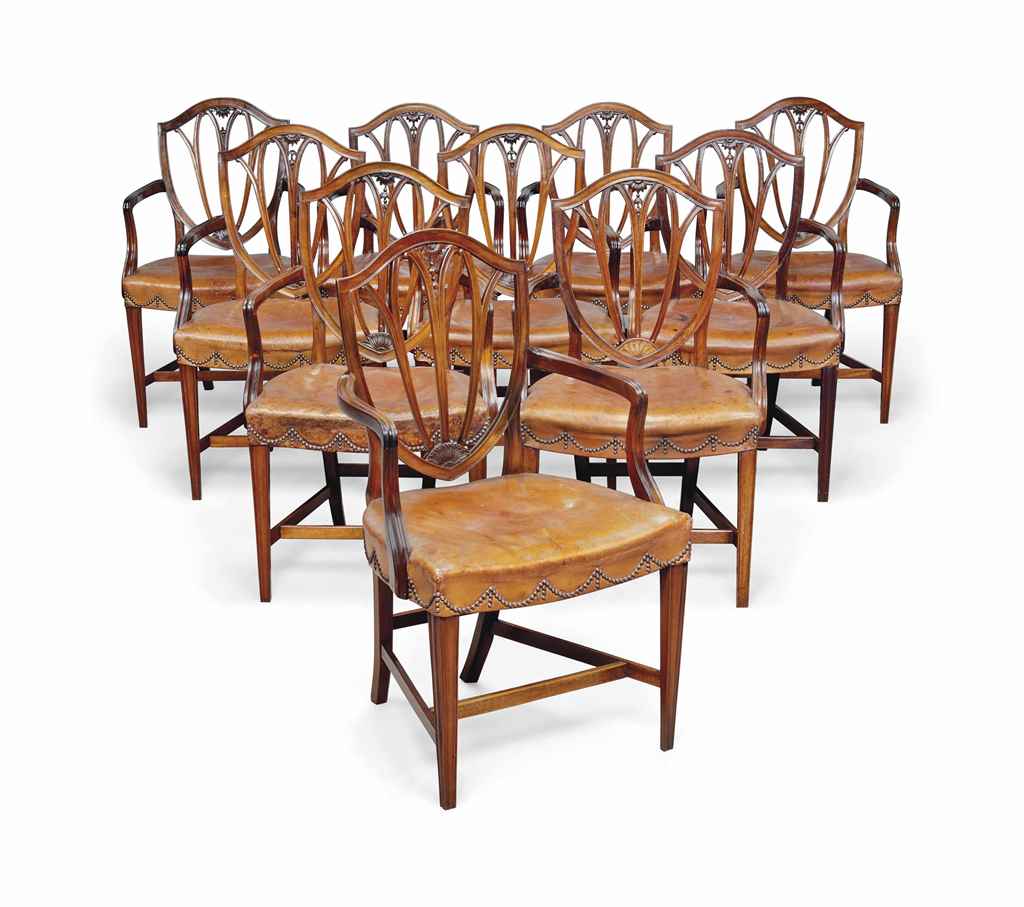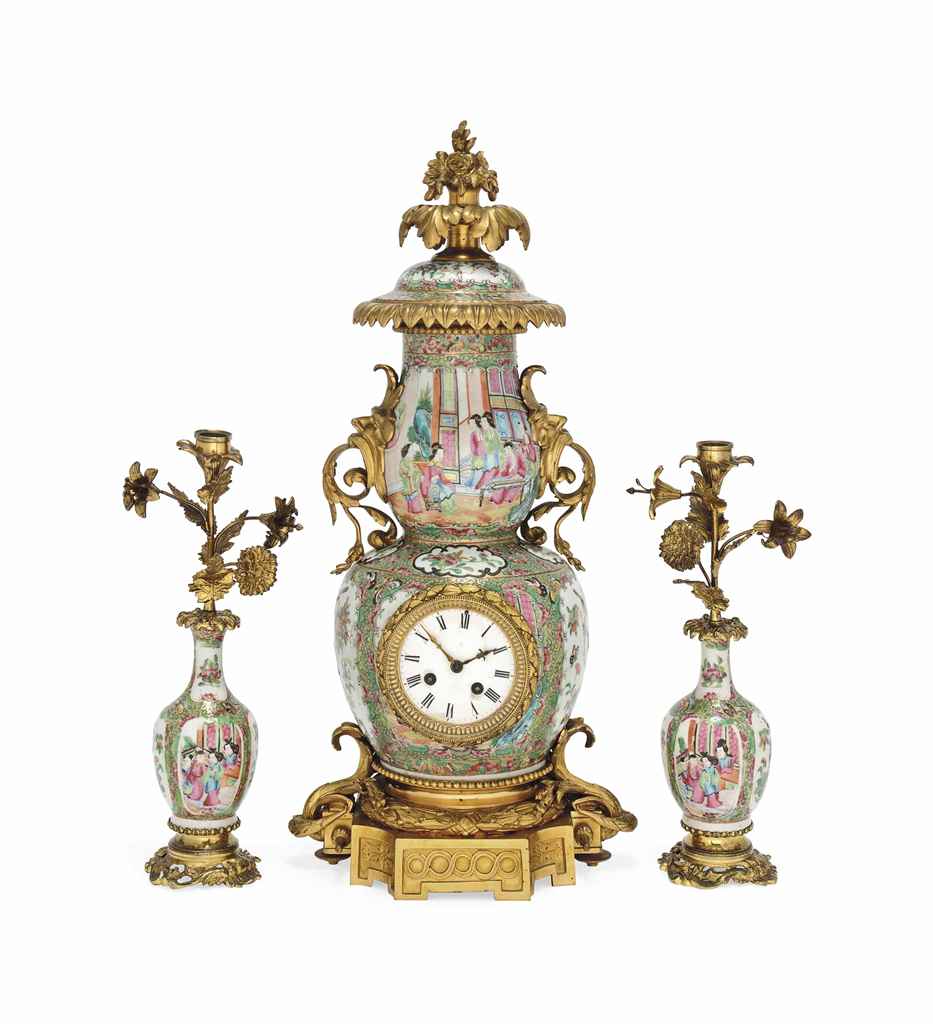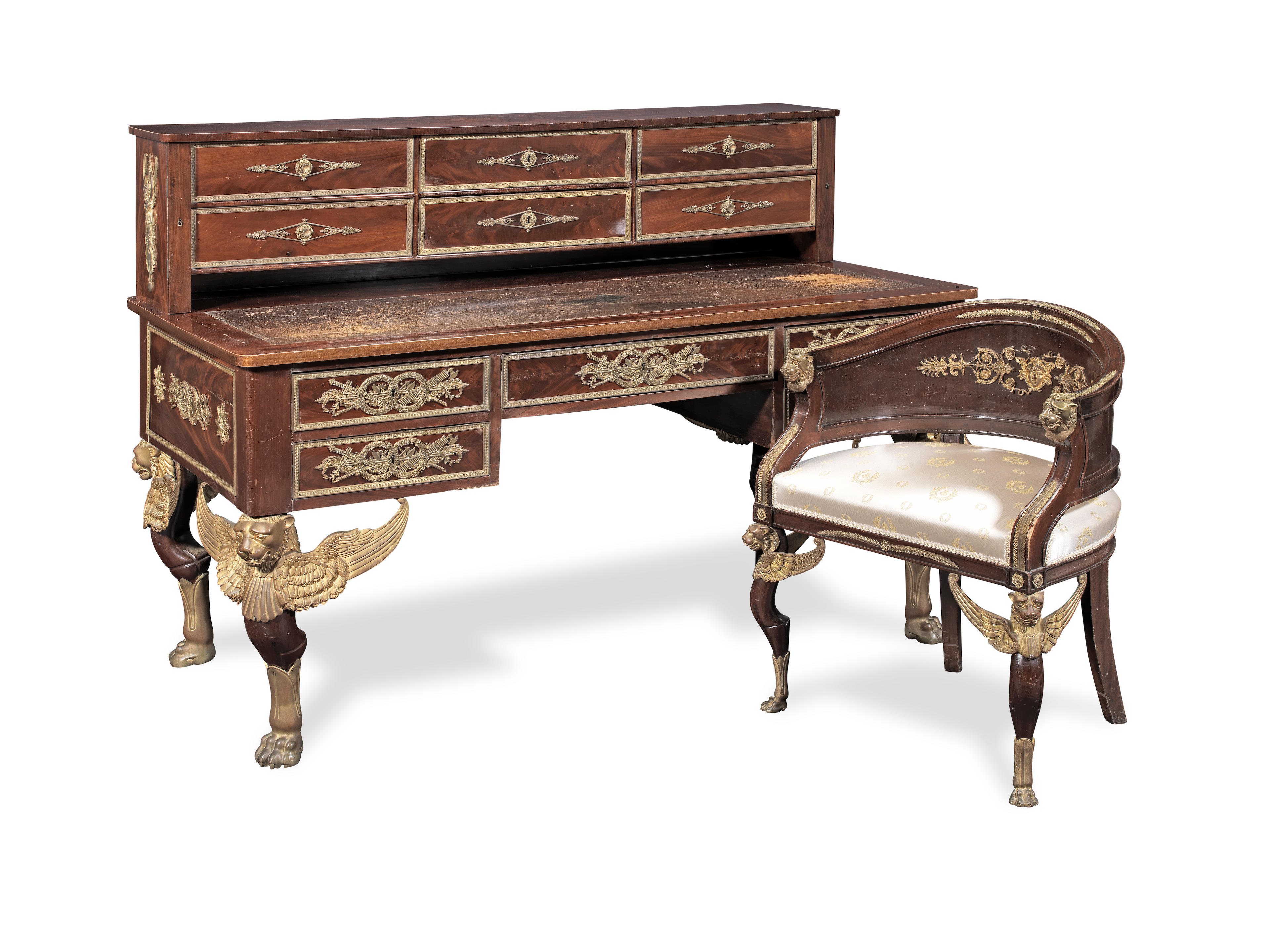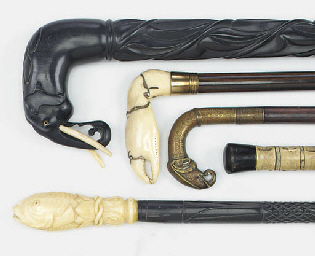A late 19th century French gilt brass mounted and stained wood table clock with unique winding systemthe movement marked for L. F. Portebois, Paris, and numbered 1007
the architectural case with Gothic style mounts, the top of faux tiled roof form surmounted by a phoenix finial above a castellated style cornice, the sides with arched fish scale frets, the 4.5" repoussé brass dial with Roman plaque numerals, outer engraved Arabic five minute track and blued steel pierced lancet hands, flanked by a pair of figural mounts formed as knights with axes within niches, the moulded base on lobed toupie feet, the twin spring barrel movement with anchor escapement, Brocot suspension and patented centre winding mechanism (see footnote), striking on a blued steel gong, 65cm high approximatelyFootnotesLouis-Frédéric Portebois was a late 19th century French clockmaker and inventor, who took out at least three patents for improvements he made to clocks, including his novel centre winding system. The first record of him, as a listing in a trade journal of 1877, referred to him as a jeweller, living at 26 Rue de Bretagne in Paris. However, two years later, in 1879, he took out what seemed to be his first patent, regarding improvements to clockwork calendars. As part of the patent application, he was listed as being a clockmaker.
He continued advertising as a jeweller, though, working at Rue de Bretagne until 1881; at which point he moved to 57 Rue Charlot and then to 35 Rue Charlot three years later. Interestingly, at this time he is also listed as belonging to the Société anonyme cooperative des ouvriers horlogers, though he still advertises as a jeweller.
The year before, on 18 May 1883, he took out a 15 year patent, number 155,531, for his centre winding mechanism for clocks, of which this clock is an example. The basic principle behind the mechanism is that the centre arbor has become the winding arbor; one wheel on the end of the winding/centre arbor interacts with both great wheels for the striking and going trains. This is achieved by having mirrored ratchet and click arrangements, which allows the barrels to be wound in the same direction. His patent for central winding was also taken out in America. Instead of going himself to file the paperwork, he assigned Victor Emilie Versepuy in his place. Versepuy was a well-known Parisian négociant-commissionnaire, someone who would handle business dealings in place of their employer. The American patent was granted in 1884.
In 1886, he took out his third patent, also for 15 years, for an internal pendulum mechanism. At some point after this, he formed a partnership with another Parisian clockmaker, Delaporte, and worked out of 15 Rue Pastourelle. They were listed as Delaporte et Portebois and seemed to specialise in making clock parts, presumably to supply the extensive rough movement industry. By 28 November 1894, the partnership had dissolved, but Portebois is listed as continuing to trade on his own. Two years later, he began advertising as a barometer manufacturer, still from 15 Rue Pastourelle.
In 1902, he received 300 fr. for being a co-winner of Le Prix Pierret, held by the Revue chronométrique and la Société de l'Ecole d'horlogerie de Paris. The competition consisted of a an exam and a practical component. Portebois made a pendulum assembly which was driven by alcohol evaporation and condensation, the details of which had been described in a previous issue of Revue chronométrique. After this, however, no other mention can be found of Portebois, either in trade listings or in the Revue chronométrique.
(1894) Archives Commerciales de la France: Journal Hebdomadaire Paraissant le Mercredi et le Samedi, 22 December, pg. 1558.
la Société de l'Ecole d'horlogerie de Paris (1884) 'Brevets d'Invention', Revue chronométrique... Organe des sociétés d'horlogerie et des chambres syndicales, 1 November, p. 175.
(1877- 1903) Annuaire-almanach du commerce, de l'industrie, de la magistrature et de l'administration.
la Société de l'Ecole d'horlogerie de Paris (1902) 'Le Prix Pierre ten 1902', Revue chronométrique... Organe des sociétés d'horlogerie et des chambres syndicales, 1 December, p. 186.
(1887) Bulletin des lois de la République française, July-December, p.303 and p.1605.
(1890) 'Marques de Fabrique et de Commerce', Bulletin officiel de la propriété industrielle et commerciale, p.899.
British Horological Institute (1879) 'Patents Connected to the Manufacture of Watches and Clocks', The Horological Journal, Vol. 22 (4) p. 52.
A late 19th century French gilt brass mounted and stained wood table clock with unique winding systemthe movement marked for L. F. Portebois, Paris, and numbered 1007
the architectural case with Gothic style mounts, the top of faux tiled roof form surmounted by a phoenix finial above a castellated style cornice, the sides with arched fish scale frets, the 4.5" repoussé brass dial with Roman plaque numerals, outer engraved Arabic five minute track and blued steel pierced lancet hands, flanked by a pair of figural mounts formed as knights with axes within niches, the moulded base on lobed toupie feet, the twin spring barrel movement with anchor escapement, Brocot suspension and patented centre winding mechanism (see footnote), striking on a blued steel gong, 65cm high approximatelyFootnotesLouis-Frédéric Portebois was a late 19th century French clockmaker and inventor, who took out at least three patents for improvements he made to clocks, including his novel centre winding system. The first record of him, as a listing in a trade journal of 1877, referred to him as a jeweller, living at 26 Rue de Bretagne in Paris. However, two years later, in 1879, he took out what seemed to be his first patent, regarding improvements to clockwork calendars. As part of the patent application, he was listed as being a clockmaker.
He continued advertising as a jeweller, though, working at Rue de Bretagne until 1881; at which point he moved to 57 Rue Charlot and then to 35 Rue Charlot three years later. Interestingly, at this time he is also listed as belonging to the Société anonyme cooperative des ouvriers horlogers, though he still advertises as a jeweller.
The year before, on 18 May 1883, he took out a 15 year patent, number 155,531, for his centre winding mechanism for clocks, of which this clock is an example. The basic principle behind the mechanism is that the centre arbor has become the winding arbor; one wheel on the end of the winding/centre arbor interacts with both great wheels for the striking and going trains. This is achieved by having mirrored ratchet and click arrangements, which allows the barrels to be wound in the same direction. His patent for central winding was also taken out in America. Instead of going himself to file the paperwork, he assigned Victor Emilie Versepuy in his place. Versepuy was a well-known Parisian négociant-commissionnaire, someone who would handle business dealings in place of their employer. The American patent was granted in 1884.
In 1886, he took out his third patent, also for 15 years, for an internal pendulum mechanism. At some point after this, he formed a partnership with another Parisian clockmaker, Delaporte, and worked out of 15 Rue Pastourelle. They were listed as Delaporte et Portebois and seemed to specialise in making clock parts, presumably to supply the extensive rough movement industry. By 28 November 1894, the partnership had dissolved, but Portebois is listed as continuing to trade on his own. Two years later, he began advertising as a barometer manufacturer, still from 15 Rue Pastourelle.
In 1902, he received 300 fr. for being a co-winner of Le Prix Pierret, held by the Revue chronométrique and la Société de l'Ecole d'horlogerie de Paris. The competition consisted of a an exam and a practical component. Portebois made a pendulum assembly which was driven by alcohol evaporation and condensation, the details of which had been described in a previous issue of Revue chronométrique. After this, however, no other mention can be found of Portebois, either in trade listings or in the Revue chronométrique.
(1894) Archives Commerciales de la France: Journal Hebdomadaire Paraissant le Mercredi et le Samedi, 22 December, pg. 1558.
la Société de l'Ecole d'horlogerie de Paris (1884) 'Brevets d'Invention', Revue chronométrique... Organe des sociétés d'horlogerie et des chambres syndicales, 1 November, p. 175.
(1877- 1903) Annuaire-almanach du commerce, de l'industrie, de la magistrature et de l'administration.
la Société de l'Ecole d'horlogerie de Paris (1902) 'Le Prix Pierre ten 1902', Revue chronométrique... Organe des sociétés d'horlogerie et des chambres syndicales, 1 December, p. 186.
(1887) Bulletin des lois de la République française, July-December, p.303 and p.1605.
(1890) 'Marques de Fabrique et de Commerce', Bulletin officiel de la propriété industrielle et commerciale, p.899.
British Horological Institute (1879) 'Patents Connected to the Manufacture of Watches and Clocks', The Horological Journal, Vol. 22 (4) p. 52.















Try LotSearch and its premium features for 7 days - without any costs!
Be notified automatically about new items in upcoming auctions.
Create an alert